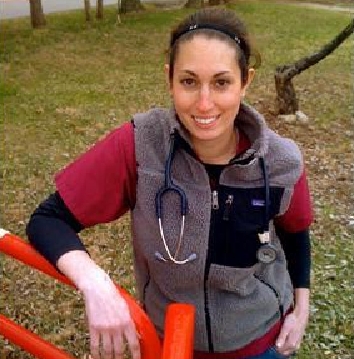
Poking and Prodding is Vital to Horse’s Health
Today we look at two often-overlooked aspects of equine health, one on each end of the horse: dentistry, and sheath cleaning.
Complete dental care is an extremely important part of preventative health—as important as de-worming, vaccinating, and foot care.
Horses have cheek teeth that grow throughout their lives and that grind to a sharp point over time, causing painful abrasions and cuts on the cheeks and tongue. If you have never looked into the back of a horse’s mouth, you probably don’t realize how far back these teeth go. There is no way to properly evaluate these teeth without the sedation and full-mouth speculum of a comprehensive dental exam. This method relaxes the horse and allows for thorough examination and comfortable treatment. Using power tools and hand floats, we can quickly treat dental abnormalities such as malocclusions, tooth extraction, and composite restorations (fillings).
Young horses should be examined as weanlings and every 6 to 12 months thereafter. Horses should routinely be floated starting at age 2 or 3. Floating before bitting is ideal, because the teeth of young horses tend to be extremely
sharp, and a bit will press the cheeks up against these razor-sharp edges. Even after a correct dental float and alignment, an adult horse will start to develop sharp points long enough to cause it to bite its cheeks and create oral lacerations and ulcerations within 10 to 14 months. Thus, it is ideal to float an adult horse’s teeth at least yearly.
In adult horses we look for hooks, points, wave mouth, accentuated transverse ridges, and stepped molars. Other conditions we encounter are gingival recession, periodontal disease, and dental decay.
As horses get into their 20s, the teeth start wearing out. From a treatment standpoint, we want to keep the existing teeth working as well as possible. We see many older horses that are receiving excellent care but starting to have
problems that keep their premolars and molars from grinding properly. This is why annual dental exams are imperative for the geriatric horse as well.
A necessary and less pleasant task for all stallions and geldings is sheath cleaning. Everyone has noticed the scaly, crusty material that seems to be stuck to a male horse’s genitals. This is an accumulation of dirt and excretions called
smegma that builds up over time and must be removed.
Although some horses appear to keep themselves clean, there is a fossa (open area) at the tip of the penis that can trap smegma and create a “bean.” If this is not removed, it can cause infections and difficulty urinating. It is also important that the genitals be examined for early indicators of cancer.
If you feel brave enough to tackle it yourself, you will need thin waterproof gloves, a bucket of warm water, a small cloth or pieces of cotton, and soap. I recommend Ivory dish soap or a sheath cleaning soap made by Excalibur. Please remember that some horses are more tolerant than others of being handled. It’s important to stand at the shoulder facing the horse, and to reach forward to do the cleaning. With gloves on and cloth in hand, gently rub his belly and work your way back to acquaint him with the idea first. If you are lucky, your horse will extend his penis and relax. If not, you will have to reach in to the sheath to clean it.
Either way, it is important to clean all sides of the penis and inner walls of the sheath with soap and water. As long as the horse is cooperating, don’t be afraid to reach up inside the sheath to clean. Don’t forget the area directly in front of
the sheath, and to check the fossa for a bean. To do this, place your finger in the opening at the tip of the penis and search around. Don’t be shy about it; it’s important that any material in this pouch be removed. When you’re done, make sure to rinse off all soap.
Sheath cleaning must be done by you or your veterinarian twice a year for hygiene and to check for any changes in appearance.
Lane Adams, D.V.M., of Meddleton Equine Hospital has barrel-raced quarterhorses and run field trials with Tennessee walking horses. She graduated from the Auburn University College of Veterinary Medicine in Alabama in 2010 with a specialty in equine medicine.
